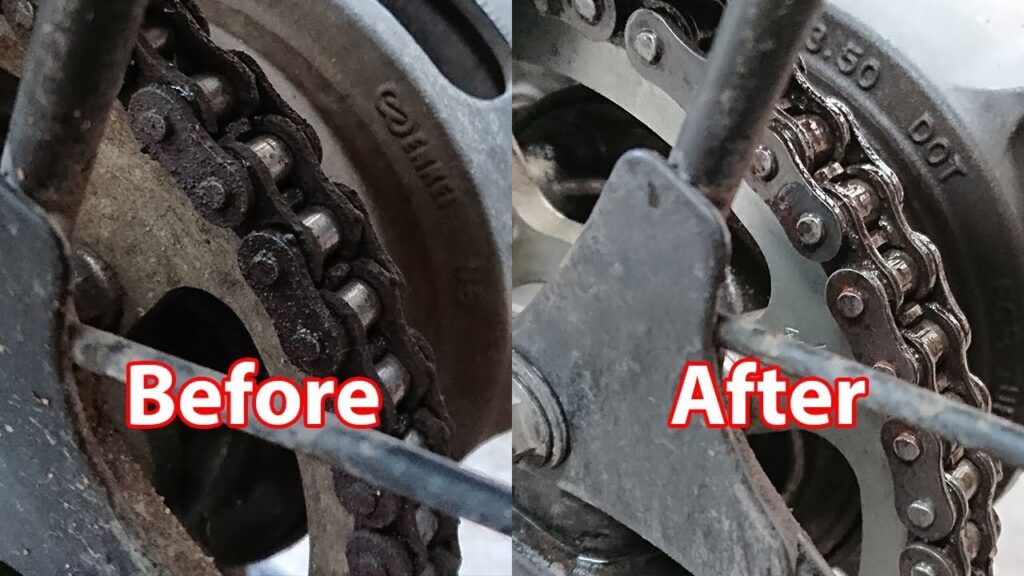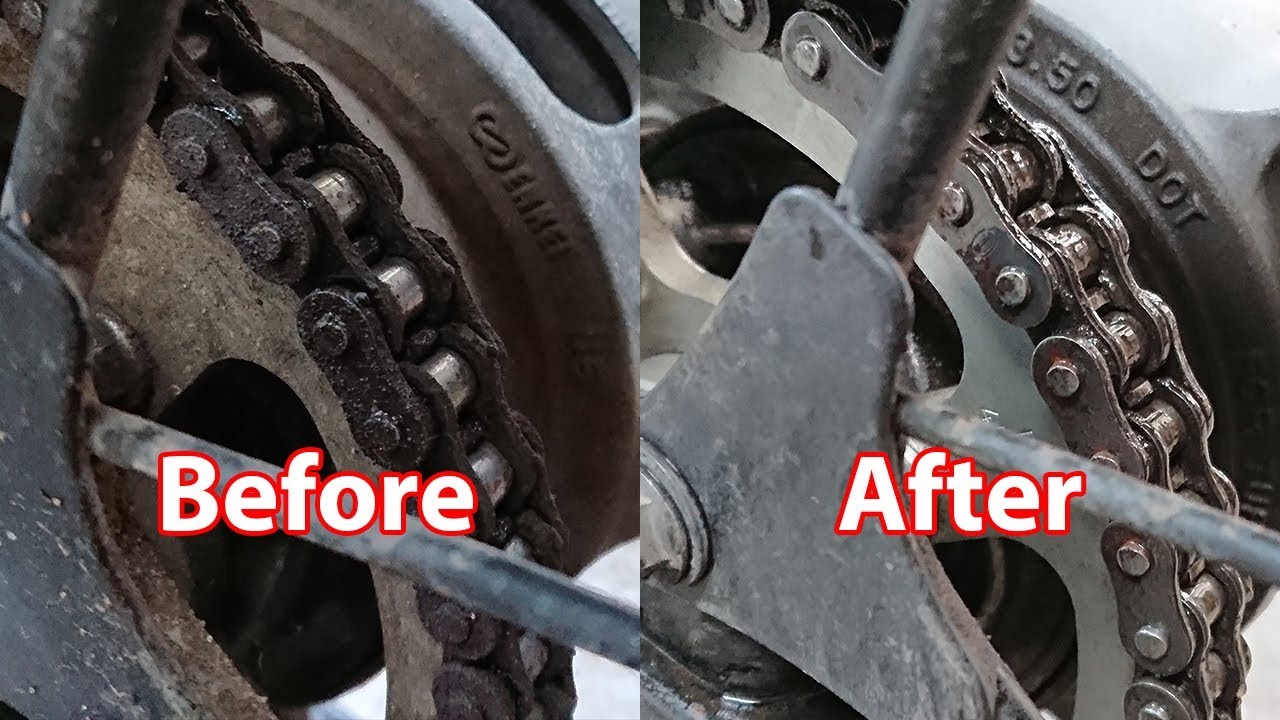
Getting Rust Off Your Bike Chain: A Comprehensive Guide
A rusty bike chain is more than just an eyesore; it’s a performance killer. Rust increases friction, causing your ride to be less efficient and potentially damaging other components. Fortunately, getting rust off bike chain is a relatively simple task that can be accomplished with common household items and a bit of elbow grease. This guide provides a comprehensive, step-by-step approach to removing rust and preventing its return, ensuring your bike runs smoothly for years to come. We will explore various methods, from simple cleaning solutions to more advanced techniques, empowering you to choose the best option for your situation. Ultimately, proper maintenance, including regularly getting rust off bike chain, extends the lifespan of your bike and improves your riding experience.
Why is My Bike Chain Rusty?
Understanding why rust forms is the first step in preventing it. Rust, or iron oxide, is the result of a chemical reaction between iron, oxygen, and moisture. Bike chains, being made of steel (an iron alloy), are particularly susceptible. Common causes of rust include:
- Exposure to Moisture: Rain, humidity, puddles, and even washing your bike without properly drying the chain can lead to rust.
- Lack of Lubrication: Chain lubricant creates a barrier between the metal and the elements. When the lubricant wears off, the chain becomes vulnerable.
- Salt: Salt accelerates the rusting process. Riding on salted roads in winter or near the ocean significantly increases the risk.
- Storage Conditions: Storing your bike in a damp or humid environment promotes rust formation.
Assessing the Rust Damage
Before getting rust off bike chain, it’s important to assess the extent of the damage. Minor surface rust can often be easily removed. However, severe rust that has penetrated deep into the chain links may compromise the chain’s integrity and require replacement. Look for:
- Surface Rust: A light coating of orange or brown rust on the surface of the chain.
- Pitting: Small pits or holes on the chain links, indicating deeper corrosion.
- Stiff Links: Links that don’t move freely, indicating rust is binding them together.
- Chain Stretch: Excessive elongation of the chain, which can be measured with a chain wear indicator tool.
If the chain exhibits significant pitting, stiffness, or excessive stretch, it’s generally recommended to replace it rather than attempting to remove the rust. A worn chain can damage your cassette and chainrings, leading to more costly repairs down the line.
Methods for Getting Rust Off Bike Chain
Several methods can be used for getting rust off bike chain, ranging from simple DIY solutions to more specialized products. Choose the method that best suits the severity of the rust and your available resources.
Method 1: Simple Soap and Water
For light surface rust, a simple cleaning with soap and water may be sufficient. This method is gentle and won’t damage the chain.
- Gather Supplies: Bucket, warm water, dish soap, a stiff brush (like an old toothbrush or a chain cleaning brush), and a clean rag.
- Prepare the Solution: Mix a small amount of dish soap into the warm water.
- Clean the Chain: Dip the brush into the soapy water and scrub the chain thoroughly, paying attention to the links and rollers.
- Rinse the Chain: Rinse the chain with clean water to remove all traces of soap.
- Dry the Chain: Use a clean rag to thoroughly dry the chain. Ensure all moisture is removed, as remaining water will promote further rust.
- Lubricate the Chain: Apply a high-quality bike chain lubricant to protect the chain from future rust.
Method 2: Vinegar Soak
Vinegar is a mild acid that can effectively dissolve rust. This method is best for chains with moderate surface rust.
- Remove the Chain: Use a chain tool to remove the chain from the bike. This allows for more thorough cleaning.
- Soak the Chain: Place the chain in a container filled with white vinegar. Ensure the chain is completely submerged.
- Soak Time: Let the chain soak for several hours, or even overnight for heavily rusted chains.
- Scrub the Chain: After soaking, remove the chain from the vinegar and scrub it with a stiff brush to remove loosened rust.
- Rinse the Chain: Rinse the chain thoroughly with clean water to remove all traces of vinegar.
- Dry the Chain: Use a clean rag to completely dry the chain.
- Lubricate the Chain: Reinstall the chain and apply a high-quality bike chain lubricant.
Method 3: Baking Soda Paste
Baking soda is a mild abrasive that can help remove rust without damaging the chain. This method is suitable for light to moderate rust.
- Prepare the Paste: Mix baking soda with water to form a thick paste.
- Apply the Paste: Apply the baking soda paste to the rusty areas of the chain.
- Scrub the Chain: Use a stiff brush or an old toothbrush to scrub the paste into the chain, focusing on the rusted areas.
- Rinse the Chain: Rinse the chain thoroughly with clean water to remove all traces of baking soda.
- Dry the Chain: Use a clean rag to completely dry the chain.
- Lubricate the Chain: Apply a high-quality bike chain lubricant.
Method 4: Commercial Rust Remover
Commercial rust removers are specifically formulated to dissolve rust quickly and effectively. These products often contain stronger chemicals and should be used with caution. Always follow the manufacturer’s instructions.
- Choose a Rust Remover: Select a rust remover that is safe for use on metal and compatible with bike chains.
- Apply the Rust Remover: Apply the rust remover to the chain, following the manufacturer’s instructions. This may involve spraying, soaking, or brushing the product onto the chain.
- Wait: Allow the rust remover to sit on the chain for the recommended amount of time.
- Scrub the Chain: Use a stiff brush to scrub the chain and remove loosened rust.
- Rinse the Chain: Rinse the chain thoroughly with clean water to remove all traces of the rust remover.
- Dry the Chain: Use a clean rag to completely dry the chain.
- Lubricate the Chain: Apply a high-quality bike chain lubricant.
Method 5: Chain Cleaning Tools
Specialized chain cleaning tools can make the process of getting rust off bike chain much easier and more efficient. These tools typically consist of a housing with rotating brushes that clean the chain as it passes through.
- Fill the Tool: Fill the chain cleaning tool with a degreaser or chain cleaner.
- Attach the Tool: Attach the tool to the chain, following the manufacturer’s instructions.
- Pedal Backwards: Pedal backwards to run the chain through the tool, allowing the brushes to clean the chain.
- Repeat: Repeat the process several times, using fresh cleaner as needed.
- Rinse the Chain: Remove the tool and rinse the chain with clean water.
- Dry the Chain: Use a clean rag to completely dry the chain.
- Lubricate the Chain: Apply a high-quality bike chain lubricant.
Preventing Rust on Your Bike Chain
Prevention is always better than cure. By taking a few simple steps, you can significantly reduce the risk of rust forming on your bike chain. Regular maintenance and proper lubrication are key to keeping your chain in good condition.
- Lubricate Regularly: Apply chain lubricant after every ride, especially in wet or dusty conditions. Choose a lubricant that is appropriate for your riding conditions.
- Clean Regularly: Clean your chain regularly to remove dirt, grime, and old lubricant. This prevents the buildup of contaminants that can accelerate rust.
- Dry After Riding: If you ride in the rain or wash your bike, be sure to thoroughly dry the chain.
- Store Properly: Store your bike in a dry, well-ventilated area to prevent moisture buildup.
- Use Chain Protectors: Consider using chain protectors, such as chain guards or chain stay protectors, to shield the chain from the elements.
Choosing the Right Chain Lubricant
Selecting the right chain lubricant is crucial for protecting your chain from rust and ensuring smooth performance. There are two main types of chain lubricants:
- Wet Lube: Wet lubes are designed for wet and muddy conditions. They are thicker and more resistant to water washout, but they tend to attract more dirt.
- Dry Lube: Dry lubes are designed for dry and dusty conditions. They are thinner and less likely to attract dirt, but they may not provide sufficient protection in wet conditions.
Consider your riding conditions and choose a lubricant that is appropriate for your needs. Some lubricants are also specifically formulated to prevent rust.
When to Replace Your Bike Chain
Even with regular maintenance, bike chains eventually wear out and need to be replaced. A worn chain can damage your cassette and chainrings, leading to more costly repairs. Signs that your chain needs to be replaced include:
- Chain Stretch: Use a chain wear indicator tool to measure chain stretch. If the chain is stretched beyond the recommended limit, it should be replaced.
- Stiff Links: Stiff links that don’t move freely indicate that the chain is worn and needs to be replaced.
- Skipping: If the chain skips or jumps on the cassette or chainrings, it may be worn and need to be replaced.
Replacing your chain regularly is a cost-effective way to maintain your bike’s performance and prevent more serious damage.
Conclusion
Getting rust off bike chain is an essential part of bike maintenance. By following the methods outlined in this guide and implementing preventative measures, you can keep your chain in good condition and enjoy a smooth, efficient ride. Remember to assess the severity of the rust, choose the appropriate cleaning method, and always lubricate your chain after cleaning. Regular maintenance will extend the life of your chain and prevent costly repairs. Addressing rust promptly and proactively ensures your bike performs optimally, ride after ride. So, take the time to care for your bike chain, and it will take care of you on the road or trail. [See also: Bike Maintenance Tips for Beginners] [See also: How to Clean Your Bike After a Muddy Ride]

